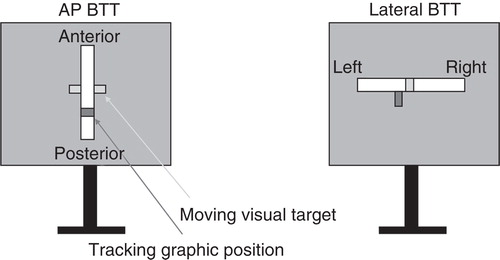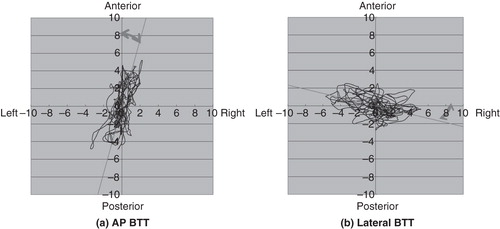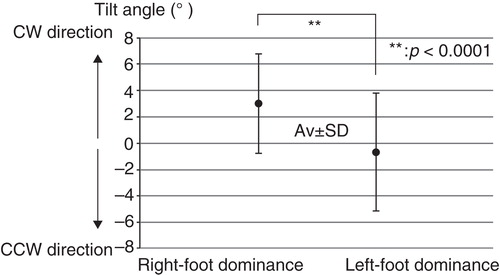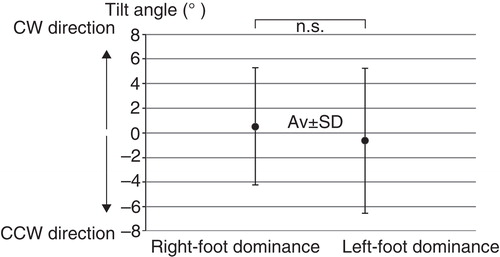Figures & data
Figure 2. Monitor screen for the body tracking test (BTT) system. The moving visual target is shown in green and the subject’s center of pressure (tracking graphic position) is shown in red. AP, antero-posterior.

Figure 3. Representative schemata of center of pressure movement obtained by the antero-posterior (AP) body tracking test (BTT) (a) and lateral BTT (b) in a case with right-foot dominance. The tilt angle calculated by principal component analysis in each figure is indicated by a grey line. In this case, clockwise tilt is shown in both AP BTT and lateral BTT.




